By Richard A. Beranty
The U.S. 85th Infantry Division was one of the Allied workhorses in Italy during World War II. Slugging its way up the Italian peninsula, the division faced some of the most formidable enemy positions devised in the European Theater of Operations, those along the Gustav Line near Minturno and, later in the war, along the Gothic Line south of Bologna.
The German troops who manned these defenses were fiercely determined and battle-tested, dug in behind minefields and barbed wire with artillery and machine-gun emplacements built from concrete or carved into solid rock. To engage this enemy, men of the 85th had to contend with the rugged terrain of the Apennine Mountains, a chain of peaks and ridges that runs the length of Italy and reaches heights of over 5,000 feet. With few roads on the lower slopes and just goat trails on the upper reaches, mules were routinely used by the Americans to bring supplies in and take the wounded out. Added to those conditions the rainy months of fall and spring and the frigid cold of a mountain winter, and the battle for Italy became a grinding and bloody yard-by-yard fight that seemed to the common foot soldier to go on forever.
One Soldier’s Story
Paul R. McNelis of Kittanning, Pa., was one of the soldiers who faced that kind of combat. As a 20-year-old infantry replacement with the 338th Infantry Regiment, 2nd Battalion, Company E, he would witness firsthand the liberation of Rome and go on to receive the Bronze Star for valor and the Purple Heart in fighting north of the Italian capital. He compares the protracted battle for Italy, which took nearly two years to win, to the kind of warfare played out in France 25 years earlier against the very same enemy.
“The Germans were dug in, entrenched,” offers McNelis. “It was tough warfare, similar to World War I Type of fighting. The Germans were smart. They were depressed in the hills and battles were constant. We’d go up one mountain and drive the enemy off or get knocked off ourselves. If we got our ass kicked off, our artillery would shell the mountain. We’d go back up, and what used to be forest was just snags of trees. Then different groups, small patrols actually, would try to take the mountain peaks. They probed the enemy lines, trying to find a weak spot. Eventually, somebody would find a way in behind them, and the Germans would get word that we were going to flank them, so they would pull back to the next mountain. That’s the kind of war it was.”
But it was also a war that might have bypassed McNelis entirely had he stuck with his deferment and stayed in college instead of giving in to the patriotic urges that were gripping millions of other young Americans in the early 1940s.
“That’s where everybody seemed to be going,” says McNelis of his decision to put college on hold after three semesters of study at Penn State University and enlist in the Army on February 9, 1943. He arrived at Cumberland Gap one week later and ultimately Camp McCain in Grenada, Mississippi, where adjustment to army life included being housed in tar paper shacks, a common experience at most of the army’s training facilities during the war.
Taught infantry tactics as a squad leader and trained to use the Browning Automatic Rifle (BAR) and M-1 rifle, McNelis shipped overseas aboard the USS General Mann on April 25, 1944, arriving in Oran, Algeria, nine days later. There he would remain for two weeks. He remembers the desert surroundings as anything but hospitable. Even coffee cups, he says, were something of a luxury item, forcing GIs to use empty C-ration cans in their place. One way American soldiers were able to obtain some of the creature comforts necessary to make life a bit more bearable was to conduct business with the local inhabitants.
“We were issued mattress covers and sold them to the Arabs. They used them for a robe, cutting out armholes and a neck hole. They made their Sunday suit out of them.”
With mounting Allied casualties during the winter stalemate of 1943-1944 pressing home the need for new faces at the front, McNelis departed Africa in a convoy of British ships bound for Naples. He arrived at a replenishment depot (called a “repple depple” in GI jargon) at Caserta, where he was first assigned to a service company in the rear units of the 85th.
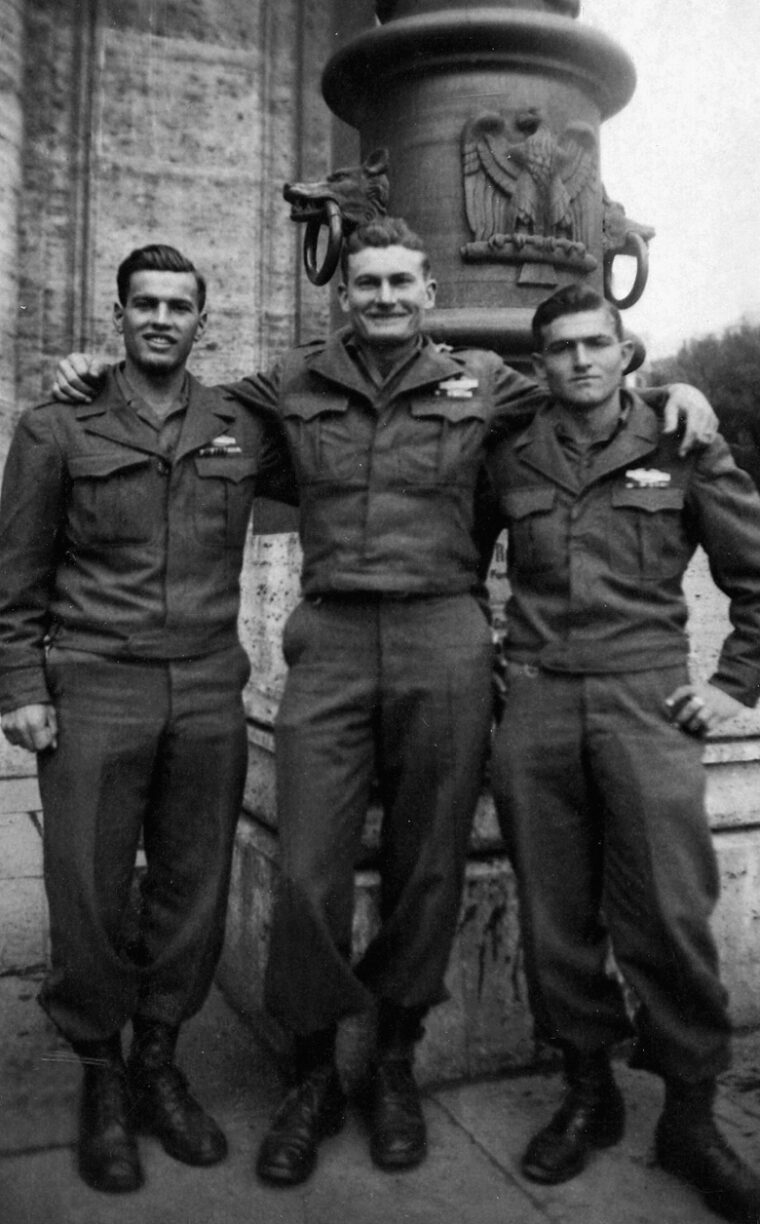
“That’s where I have my first recollection of war. This grave registration outfit had American casualties, dead GIs, stacked up like cordwood. And they were black from decomposition. I was so damn dumb at the time that I thought they were all Negroes because the bodies were black.”
When the Allies launched their offensive against German positions in the latter part of May 1944 and managed to push through the defenses of the Gustav Line, the German Army was at long last on the run. The breakthrough ended a nine-month struggle that had seen few Allied gains since the previous September when U.S. forces went ashore on the Italian mainland at Salerno. Over the next few weeks, the Allied effort moved northward across the flat coastal regions south of Rome, which was spared destruction by the fleeing Germans and declared an open city. On June 4, American troops entered the Italian capital, and a day later the men of the 85th took part in that city’s liberation celebration.
“We went into Rome in single file, walking down both sides of the road,” McNelis says. “A couple of days later, they had a big ceremony. General Mark Clark (the U.S. Fifth Army commander) liked his flags flying and lots of photographers around. He was not held in great esteem by our soldiers. When he arrived in Rome, they had a big ceremony in front of the Victor Emanuel Palace. Secretary of War Henry Stimson presided. Rome was the first Axis capital to fall to Allied troops.”
Following the enemy’s evacuation of Rome, Field Marshal Albert Kesselring, one of Germany’s ablest defensive strategists, withdrew his two armies from the onrushing Allies. He hoped to delay the Allied advance by planting mines, exploding demolitions, and sacrificing his second-rate units to gain time to reach the defenses of the Gothic Line. If the Allied advance could be held up long enough, he reasoned, the good weather months would pass, bringing the rain of September and October and the snow of November and December. U.S. forces would then be caught up in another winter stalemate, just as they were at Cassino the previous year.
“We were only in Rome for a very short time,” McNelis explains. “The field units were chasing the Germans, who hadn’t set up any prepared defenses, except rear-guard action to slow us. We chased them north of Rome about 15 miles. My outfit came off the line, and that’s when I was introduced to Company E. From then on I was in combat.”
The speed of the Allied push northward from Rome was impressive. By early August, American forces had reached Florence, advancing some 270 miles in 64 days. McNelis says the first time he tasted real combat was west of that city along the Arno River, where the 85th took over defense of the river’s south bank on a front of about 24 miles. The Americans routinely sent out patrols to probe enemy lines and to take prisoners for interrogation in order to ascertain the location of the Germans and their strength.
“We did a river crossing at a town called Empoli,” he says. “We were scattered, dispersed along the river bank. Patrols were sent across at night. A few firefights occurred, but nothing major. At one point, battalion came up with this idea to set up permanent combat patrols. They wanted these people to do the main scouting, to stay ahead of the division. I said, ‘Sure, I’ll go.’ Fortunately, they didn’t take me. Those guys didn’t last long.”
On September 13, the advance defenses of the Gothic Line were in sight and the 85th began its attack. To division soldiers, the mountains that loomed in the distance looked like a solid wall of rock, the steepest portions of which were on the southern, or attacking, side. On the lower slopes, a wagon road generally wound its way to a farmhouse; beyond that, goat trails prevailed. At the highest elevations, nothing existed but trees or jagged rock.
From the base of every mountain to its Peak, the German army found ideal positions for defensive action, dispersing its infantry in foxholes, behind rocks on dominating points, or inside buildings. Another factor favoring the enemy was their ability to position artillery and mortar crews on the reverse sides of the mountains, out of the reach of American guns. These could easily zero in on areas from which U.S. troops might attack.
“They had excellent artillery,” McNelis says. “Some were those rocket-launched screaming meemies. From what I was told, the noise was created by loosening a little ring on the shell. They were frightening. You could hear them coming. They sounded like a truck coming in sideways. And even though Italy was not suited to tank warfare, you’d see some occasionally. Their tanks were equipped with 88mm guns and were very accurate. They would pull a tank to the brow of a hill and use it as artillery while we were trying to climb up. Then they’d back off and the tank would be gone to another sector. Americans were constantly getting killed.”
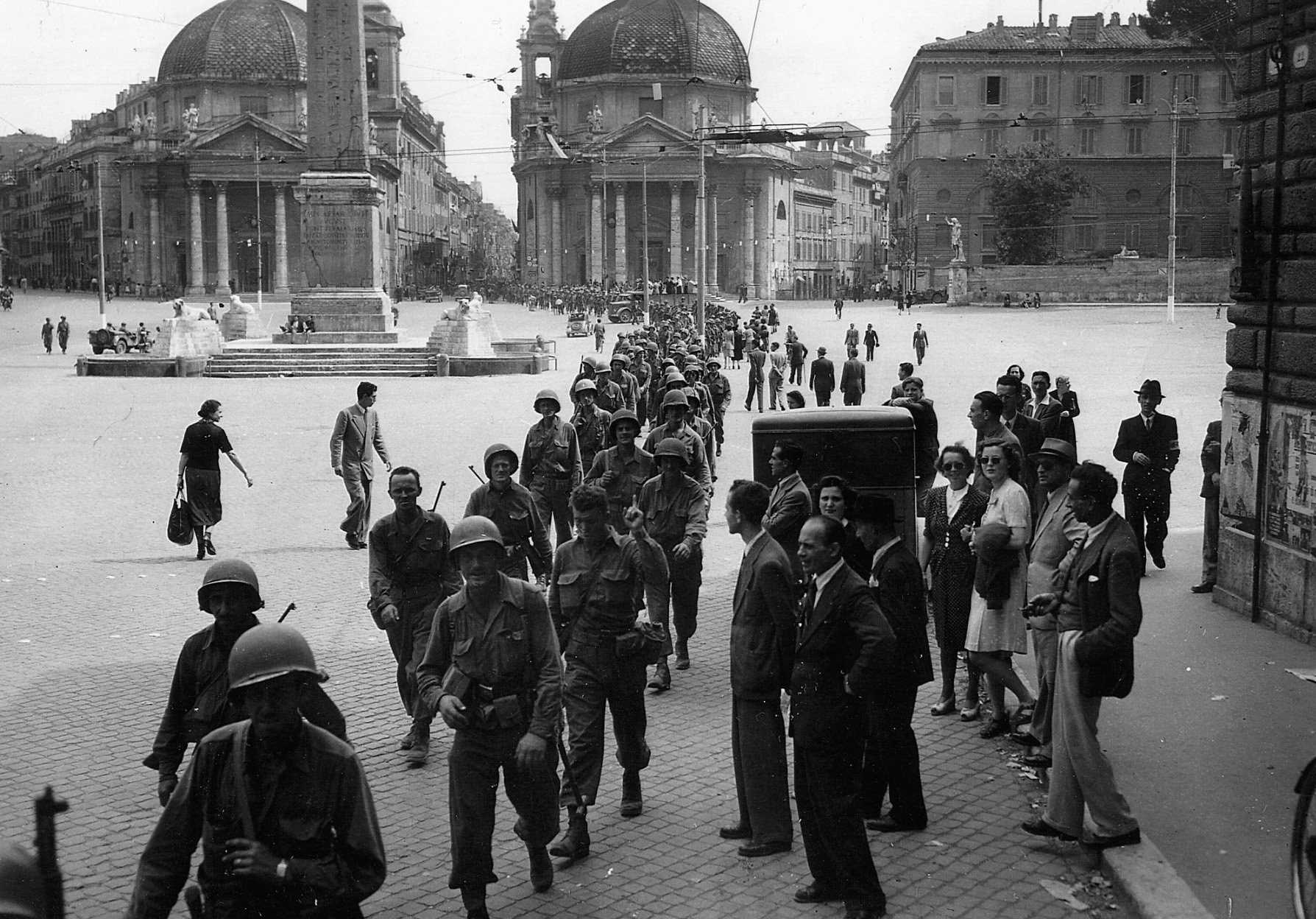
The Fight for Il Giogo Pass
In their initial attack on the Gothic Line, Allied forces faced two mountain passes that had been under construction for more than a year by workers of the Todt Organization. One was Futa Pass, heavily defended with concrete bunkers and minefields. The other was Il Giogo Pass, less defended but narrower and steeper. Clark opted to attack through the latter and committed three divisions to the battle. It took five days of fighting to breach the enemy’s positions. Although the Germans had no official line of prepared defenses to fall back on, 40 miles of steep and jagged mountains still remained before the Americans would reach the Po Valley. In the minds of U.S. soldiers, it was simply a continuation of the Gothic Line. at this point in the war, McNelis was made an acting squad leader in charge of 15 men despite retaining his private first class rating.
“After some amount of combat, you lose a lot of squad leaders,” McNelis explains. “They’re among the first ones you lose. So they made me an acting squad leader. I was running a squad as a Pfc. for several months. The reason being, they started disbanding units like ack-ack, air control people who came in with ratings, sergeants and above. In the table of organization, there just wasn’t room for that many sergeants. So I stayed a Pfc. until some time later.”
Following the battle for Il Giogo Pass, the next objective for McNelis’s regiment was Firenzuola, six miles to the north. It was the last town of any size in the division’s sector south of the Po River. The town was captured on September 21, and the next day McNelis’s company was held up by heavy machine-gun fire from the crest of Hill 733 near Poggio, a mountain village about two miles northeast of Firenzuola. In the ensuing fight, his platoon leader, 1st Lt. Orville E. Bloch, earned the Medal of Honor for eliminating five machine-gun nests singlehandedly.
“I was with him, along with three other guys,” McNelis says. “Our company had a tough battle earlier, taking this mountain ridge. I mean it was a tough battle. Eventually, we overcame them and had taken some prisoners, about 50. Lieutenant Bloch asked me and another guy to take these prisoners back and turn them over to MPs. When I got back up to the line, I asked where Bloch was. ‘He went to that village up there,’ somebody said. I thought it best to report in, so I headed up to find him. It was like climbing alongside a big cliff with one narrow passageway to the village. When I got there, hell, I didn’t know what was going on, but Bloch had already charged one machine-gun nest.
“So he grabbed me,” McNelis continues, “and told me to cover a street corner. There were only about three houses there, but they were all connected. I took the corner, looked up the street, and saw Germans. I fired at them, and they ducked into some doorways. I went into one, and there was a German soldier, a kid who probably wasn’t any more than 15 years old, lying on a table. His stomach looked like somebody took a knife and cut him all the way across. He was lying there trying to hold his stomach together.
“We carried morphine inside our helmets, just a little tube of it, and I gave him a shot. After that, I had to get out of there. Things were hot. We went back down the hill because our line was on this ridge behind us, and we were out in front of it, vulnerable. We weren’t sure where the remaining Germans were.”
According to his Medal of Honor citation, Bloch was credited with eliminating five machine-gun positions that day, killing an unknown number of the enemy, taking 19 prisoners while wounding six of them. He was quoted in the division newspaper at the time, saying: “I don’t think I would have tried it if the Nazis hadn’t been picking off our men so fast. I got so riled I guess I just didn’t realize what I was doing.”
But when it came to interrogating captured enemy soldiers, McNelis says that Bloch knew his business well.
“Lieutenant Bloch spoke better German than the Germans did. He was just a little guy, about five-feet-three, but he’d get them and work them over with his hand or whatever he happened to have, just whack them around a little bit. He could really talk to those Germans. His idea was to scare them in order to get information, like the position of their regiment, the name of it, how many people were up there, what kind of fortifications they had, those kinds of things. He sent me a postcard after the war, asking whether I received the Bronze Star, saying that it should have been the Distinguished Service Cross.”
Following the action in and around Firenzuola, the 85th moved forward over increasingly rugged mountains. The last great ridge of the Apennines had been conquered by the end of September, but 20 miles of torturous mountain terrain still remained to reach the Po Valley. Rain began falling on September 20 and continued for the next week. Heavy rains started on September 29 and lasted until October 9. Area streams became raging rivers as water poured off the barren hillsides. Roads, trails, and bridges were washed out.
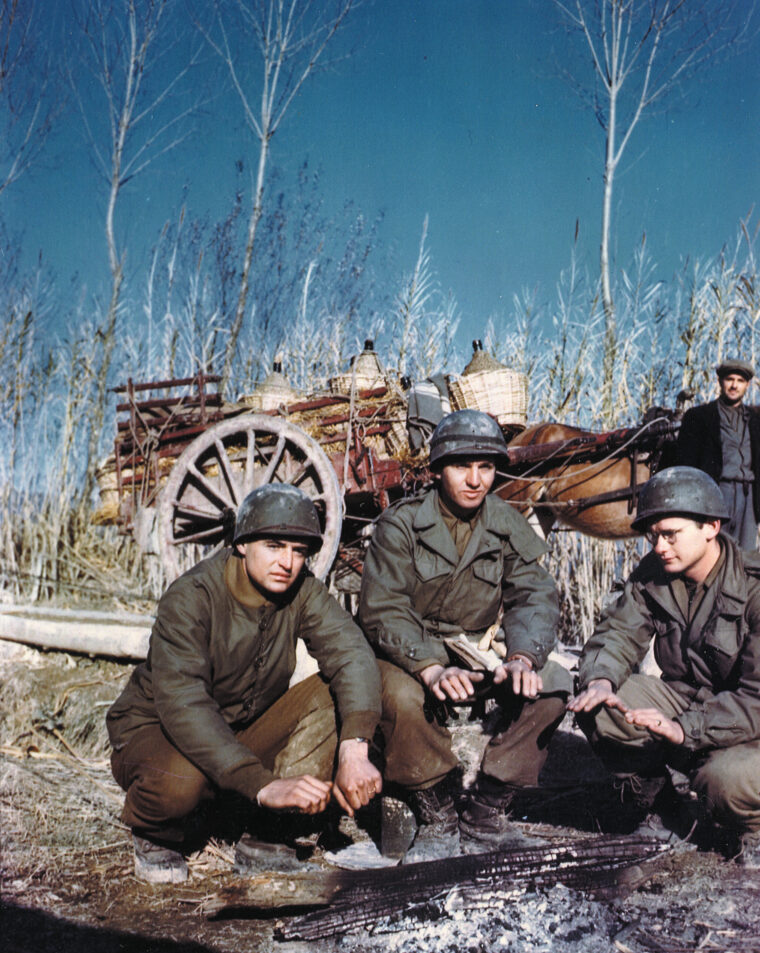
Allied air support was grounded and lines of communications were downed. Artillery had to be towed into position by bulldozer, and the troops, by and large, suffered physically and psychologically from the conditions. As he had hoped, Kesselring was winning the race with the weather.
“You can’t live out in the open forever,” McNelis says. “You have to have shelter. We are human beings and can only take so much or nobody is worth anything. So, whenever we found a farmhouse, a barn, or a cowshed, we got inside of it. And remember, this is high up in the Apennines. The spine of Italy is these mountains. But generally speaking, we weren’t on the line for any more than 15 consecutive days, depending on the situation, or three weeks at the very most, before they pulled us back to the rear slope of a mountain, let us rest for about a day, and brought up hot food. A cook would be sent up for each squad or platoon. They would set up in a barn and warm up these 10-in-1 rations.
“Otherwise, on the line we survived on K-rations,” he explains. “Mules brought them up at night along with ammunition and water. K-rations were in boxes about the size of a Cracker Jack box. Breakfast was a little can of ham and eggs, three crackers, four cigarettes, and instant coffee. Lunch was the same thing, plus lemonade powder. Instead of the eggs, though, we got a can of cheese loaf. For supper, there was a can of beef and pork loaf. We were happy to get that stuff. C-rations were better, of course. They had more of a variety, like ham and beans but we didn’t get any of them since they were bulkier and we were being supplied by mules.
“If you were on the line, K-rations weren’t that bad. One good thing about them was that the box was impregnated with wax. There was just enough that when you set them on fire, it would warm a cup of coffee. A buddy of mine, David Milton, was the first one who showed me how to make toasted cheese. You open the can, stick your bayonet in it and hold it over that fire to melt the cheese, and then put it on the crackers. But you had to be careful about lighting fires. You didn’t want to bring enemy fire on you.
“There were also times when we came across a farmhouse. They all contained a barrel of wine, so we did have some wine to drink. Occasionally, we also found a civilian inside. I guess they decided to stay and hope the war would pass them by. They were generally friendly; we didn’t force anything on them. But if there were chickens around, somebody would steal them. And in some places, we would swap the meat out of our K-rations for eggs. That would be a one-time exchange. They wouldn’t give us any more eggs after that. They had no taste for our K-rations.”
If obtaining food was a tough challenge, staying clean, dry, and warm was even more difficult.
“When we came off the line, sometimes they would set up shower units along a river, about once every three or four weeks,” McNelis explains. “Here we could exchange our clothes for some that they boiled from the previous group. These units were pretty efficient in that they took everything we wore and gave us back a fresh uniform. It didn’t necessarily fit, but it was nice because it was clean.”
On October 10, the 338th Regiment reached positions from which it began an attack on Mount Della Formiche, a series of steep cliffs important to the German defenders because of its commanding view of Highway 65. Two villages at the foot of the mountain were cleared of the enemy after a day of heavy fighting.
“We were on the approaches to Mount Formiche,” McNelis says. “It was a pretty open area and they asked me to take a patrol, six guys, up this hill which our artillery had just pasted. So we’re going up in this ditch area, trying to stay concealed and covered because it was daytime. We didn’t catch any fire, but when we got farther up, we saw a cluster of farmhouses, about three or four buildings, in front of a cliff. We got up to it, went across the patio going into this farmhouse, and I heard a noise down in the cellar.
“I hollered ‘Quando Tadeski,’ meaning, ‘How many Germans’ in Italian. Damn if one didn’t come up. So I somehow said, ‘Any more down there?’ He said, ‘Quanti?’ I said, ‘Yeah.’ I think he said four. ‘Andante,’ I told him, meaning, ‘Get them up here.’ Believe it or not, they started coming out. We had 10 or 12 Germans come up from this basement, and we only had a patrol. So we were pretty anxious to get rid of them. But by then, the guys behind us started to arrive.
“So we consolidated our positions late in the afternoon, getting everybody up from the valley. We had some guys in a little outbuilding alongside the houses, and some in foxholes as security. After dark, the Germans counterattacked, came down and caught the guys in this outbuilding, firing into it with what we called ‘beehives.’ They were like bazookas. The Germans killed a bunch of our guys. We probably lost more there in a period of an hour than in any other battle.”
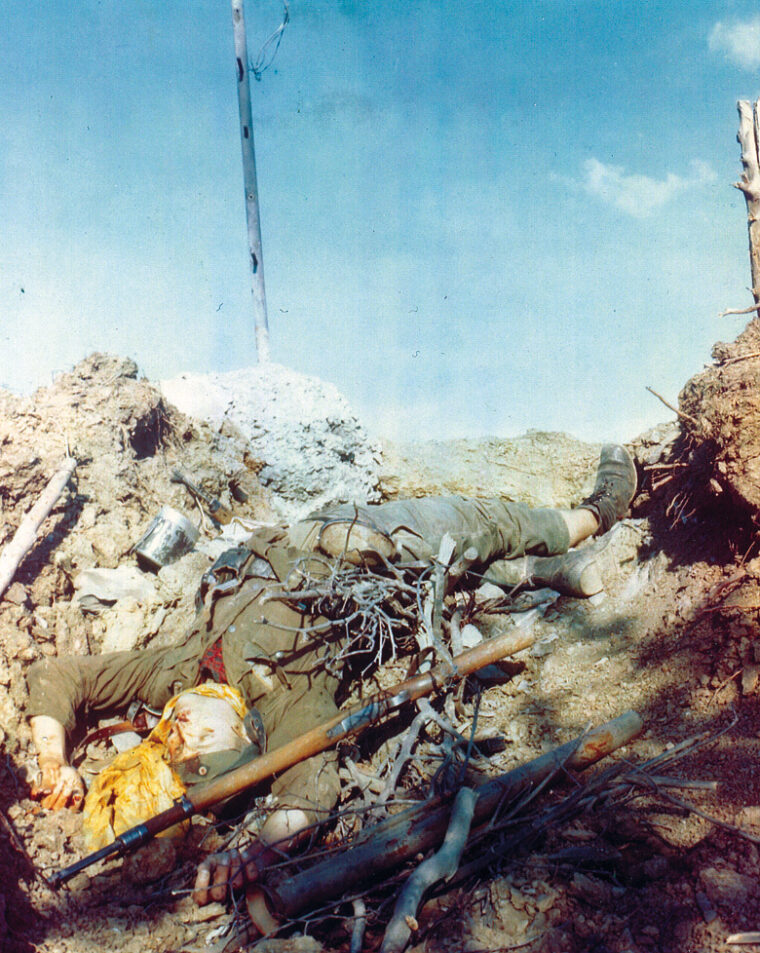
McNelis Earns a Bronze Star
A day later, in another fight for one of the hills on Mount Della Formiche, McNelis’s actions won him the Bronze Star for valor. His citation, dated October 12, for heroic achievement in action in the vicinity of Carpenaccia, on Hill 754 due east of Peglio, reads as follows:
“While reconnoitering for possible enemy positions and beyond the requirements of his mission, Pfc. McNelis, squad leader, noticed a battery of enemy mortars. Without regard for his personal safety, he crept forward silently and investigated while the other member of his squad kept his advance covered. He took three enemy prisoners and destroyed the mortars returning the prisoners to the company. He reported definite and accurate information that there were no more enemy to our front. His heroic action secured the entire hill.”
“Medals are generally given because of where you happened to be, who saw it, and who writes you up,” McNelis says. “I can tell you about a lot of other times when we should have had some medals, but didn’t get any. But in this instance, we had just taken a ridge, and we were consolidating and it was hot. My squad was out of water. So I got this guy named John McAleavey and said to him, ‘Let’s take the canteens and go to that farmhouse down there and get some water.’ I figured there had to be a well somewhere. So I’m carrying these canteens, armed with a P-38 pistol that I had taken from a German casualty earlier. I usually didn’t take anything from dead or captured Germans because we were in combat. You didn’t want to have any of their stuff on you if you were captured, because they’d probably kill you for having their equipment.
“But it was nice to have a pistol as a sidearm. McAleavey was a BAR man at the time, and we headed for this farmhouse. Like most of them, it was built on the back slope of a hill. From one entryway you go straight into the upstairs, or the main floor. Then down behind there usually was a kitchen. A lot of times, the Italians kept their animals in there for heat to warm the house. Somehow, my buddy and I separated.
“I went into the upper area, straight in, and there were some German packs lying there. So I started to look around and all at once I hear this shooting. I scooted outside and came back around the farmhouse, and there’s Mac shooting in the windows like a cowboy. He had these guys captured in the kitchen area. So I starting firing the pistol and they came out, surrendered and as the citation says, they were part of a mortar set-up who weren’t normally on the front lines. Usually, they’re behind the lines, like artillery. Mount Della Formiche was quite a battle.”
The taking of Formiche threw large numbers of German troops into confusion and many surrendered. In nearly a month and a half since its attack on the Gothic Line, the division had captured some 2,000 prisoners. McNelis’s regiment gradually moved northward through more rugged country toward Mount Fano, which it captured on October 20. Still, the Germans continued with their delaying tactics, and every night American patrols were sent out to try and make contact with the enemy. Toward the end of October, the regiment was poised to attack the strongpoints of Pizzano and Orbega to the northwest, which were the last dominating mountains south of the Po Valley, now only eight miles away. On October 25, McNelis had part of his leg blown open by an enemy grenade. His memories of that day and subsequent recovery remain vivid.
“For a change we were going downhill,” McNelis relates. “We had our command post in this barn and set up foxholes around the perimeter, security for that night. They asked me to take a patrol to see if the Germans had pulled out. So we started down, this is about 11 o’clock at night and it was dark. Our platoon sergeant, a guy by the name of Jackson, came up from behind me and asked, ‘Where are our lines?’ I said, ‘See that rock cliff up there? Don’t get out in front of it because that’s our line.’ Well, we went about 20 yards ahead and, ‘Bang!’ He somehow had gotten out in front of our so-called lines and one of our guys killed him. We went back to the command post and found out what had happened. Then we continued again with the patrol.
“Now it’s black night,” he continues. “We went back down to the same general area, threw grenades, yelled, hollered, shot. We got nothing in return, so we assumed the Germans were gone and we went back to the command post where we found guys from another outfit. Their unit had tried earlier to get into this same town and got kicked back, so they sent some people up to us to lead in from our positions. Since we had been down there, David Milton and I left with this patrol. Now it’s 4 o’clock in the morning. It’s so black you can’t see your hand. We went down a little farther than where we had been earlier and saw a haystack, about 20 feet high. Milton asked, ‘What are we going to do?’ I said, ‘You go around this side and I’ll go around the other side.’ So we did, and we’re standing behind this haystack and Milton said, ‘There’s a foxhole over there.’
“He was right. For protection, a German had dug his foxhole behind this haystack. And I felt the Germans had withdrawn, so I took my M-1 and kind of probed inside the hole and said, ‘They’re gone, see. There’s nobody in there.’ As soon as I said that, a German came out firing a zip gun. He must have had a telephone line laid into his hole because when I turned around, instinctively pulling my trigger, I tripped over something. By then, the shots had alerted everyone around there, and apparently another German hole was close by and somebody threw a grenade.”
McNelis says his bullets hit the German soldier at point-blank range.
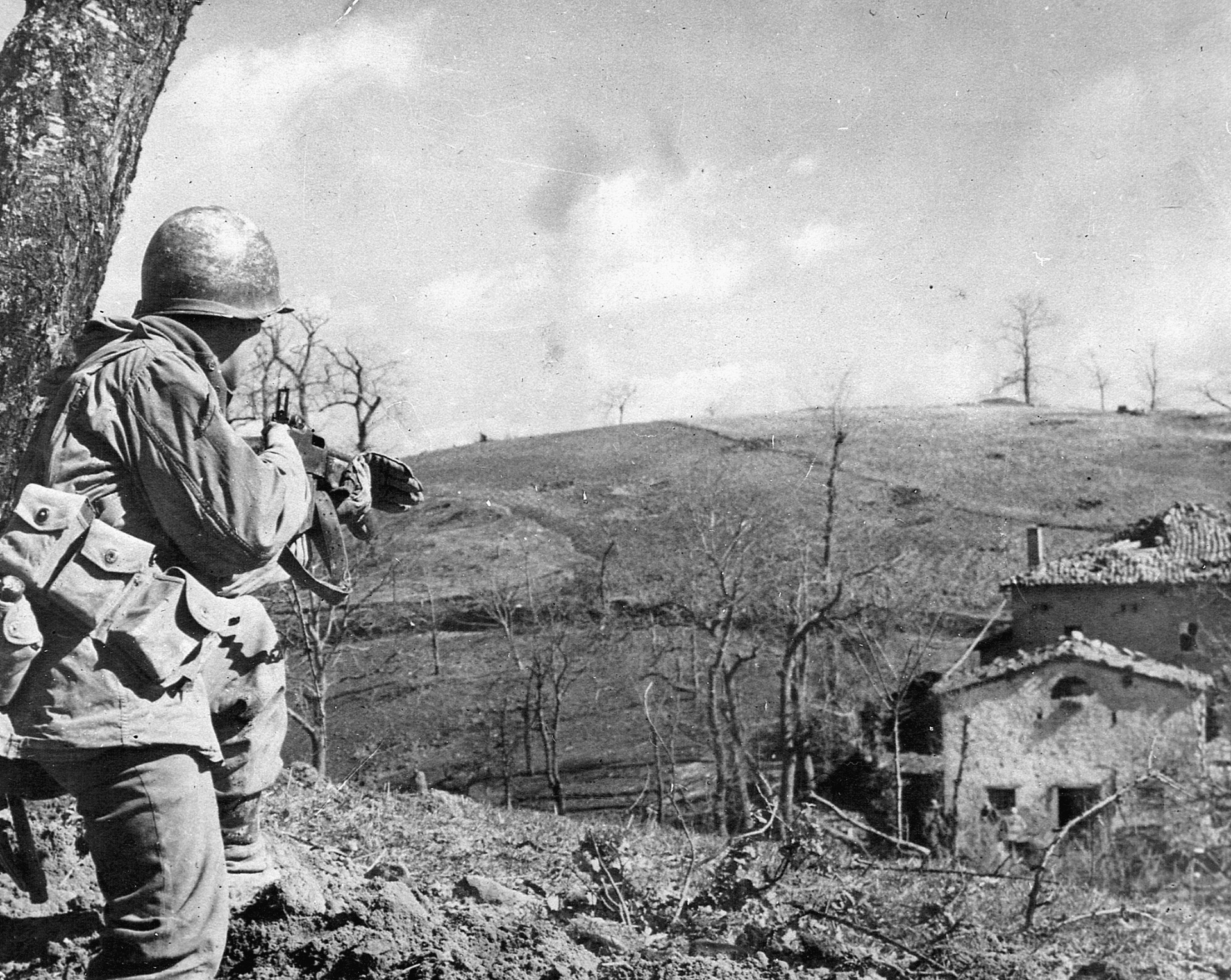
“He was moaning, trying to get out of the foxhole, and I grabbed hold of him,” he explains. “Can you believe it? I’m going to pull this German out of his foxhole! Why? I don’t know. You just do things, and it all happened so damn fast. I didn’t know what happened with Milton. I thought he was killed by that zip gun, but as I found out just recently, he wasn’t killed. He was taken prisoner and died later of wounds in captivity. So the grenade landed right behind me, exploded, and I dropped the German and ran around the corner on the up-slope behind the haystack. I didn’t realize that I was hit until I felt blood running down my leg. Then I thought, ‘Man, I got to do something!’
“Fortunately, I saw two helmets, silhouettes in the sky, and I hollered at these two guys who were with this outfit that had been trying to get in there earlier. They came over, and I put an arm over each of their shoulders and they hauled me back to our command post. We had a medic assigned to us, and he dressed up the wound. I don’t think it was a fragmentation grenade, a German potato masher, because it has a sleeve of metal to launch fragments in all directions. I had a lot of tin up my leg, plus this blowout on my calf, so I think it was a concussion grenade. If it had been a potato masher, I doubt if I would have survived because it exploded right behind me. So the command post called battalion, which had medics, stretcher bearers, and they came down from the battalion aid station, about a mile or two behind us, and carried me back.”
McNelis says the next morning he was placed on a stretcher across a jeep which took him to the edge of a mountain ridge. He was then thrown over a mule that carried him off the mountain to a river bottom where an ambulance waited. He was driven to an aid station near Florence and transferred to a hospital near Leghorn on the west coast of Italy where doctors operated.
“We were lined up on stretchers,” McNelis relates, “waiting to be operated on. Those doctors worked a lot of overtime. I don’t know how long those lines were, but they were long. Before I went in for the operation, I must have been asleep because I woke up, and the guy next to me was looking at this Purple Heart. I said, ‘Where did you get that?’ He said, ‘You got one.’ So I looked down and there was one on my stretcher. They took me in, patched me up, and did a lot of stitching. I was in Leghorn for maybe a week before they decided that I should be in a hospital farther back, so we went by hospital boat from Leghorn to Naples.”
Four days after being wounded, McNelis wrote a letter to his parents. Dated October 29, its optimistic tone reflects a desire to spare his parents news of the seriousness of his wounds. It reads as follows:
“Dear Mom & Dad,
I thought it best to write as soon as possible and let you know that I have been wounded slightly. I hope this reaches you before the official telegram comes so that you will not be worried too much, and that I am alright. It was about 4 o’clock in the morning of the 25th that I was hit a couple places in the right leg by fragments from a hand grenade, but I was able to get back to our lines with help. I’m in the 64th Gen. Hosp. now and will probably be here for awhile. The food is swell; we have sheets & pajamas, and I expect to be walking around in a day or so.
Again I ask you not to worry. I really haven’t had much pain. I’ll be able to write pretty often now so you can expect to hear from me as I am expecting to hear from you.
Your son,
Paul”
Like thousands of other soldiers, McNelis was just one of the casualties on both sides of the line in this war of attrition called the Italian campaign whose outcome rested on which army would run out of infantrymen first. And with the battles in France taking center stage, neither the Germans nor the Allies could expect reinforcements. From the date of its attack on the Gothic Line through October 28, the U.S. Fifth Army had suffered 17,388 casualties. It had also exhausted all of its available artillery ammunition in Italy. As a result, Clark ordered his army to the defensive.
All was relatively quiet for the next five months as both sides settled in and waited out the rain and snow of winter. Kesselring’s plan to delay the Allies into another winter stalemate had worked. McNelis, on the other hand, had time to heal and recuperate from his wounds, enjoying hospital life in Naples where, he recalls, tangerine groves were plentiful.
“Our recuperation tents were in a tangerine grove near Caserta,” he says. “It was nice, really. We ate tangerines until we got sick. I think I stayed in Naples for so long because the doctors wanted to see if they could salvage the skin and muscle from deteriorating around this blast on my calf. They kept wet bandages on it, trying to keep it moist enough to get a skin graft going. Eventually it dried up; they couldn’t save it. So one day a doctor came in and said to me and the guy next to me, ‘You two are lucky. You’re both going home.’
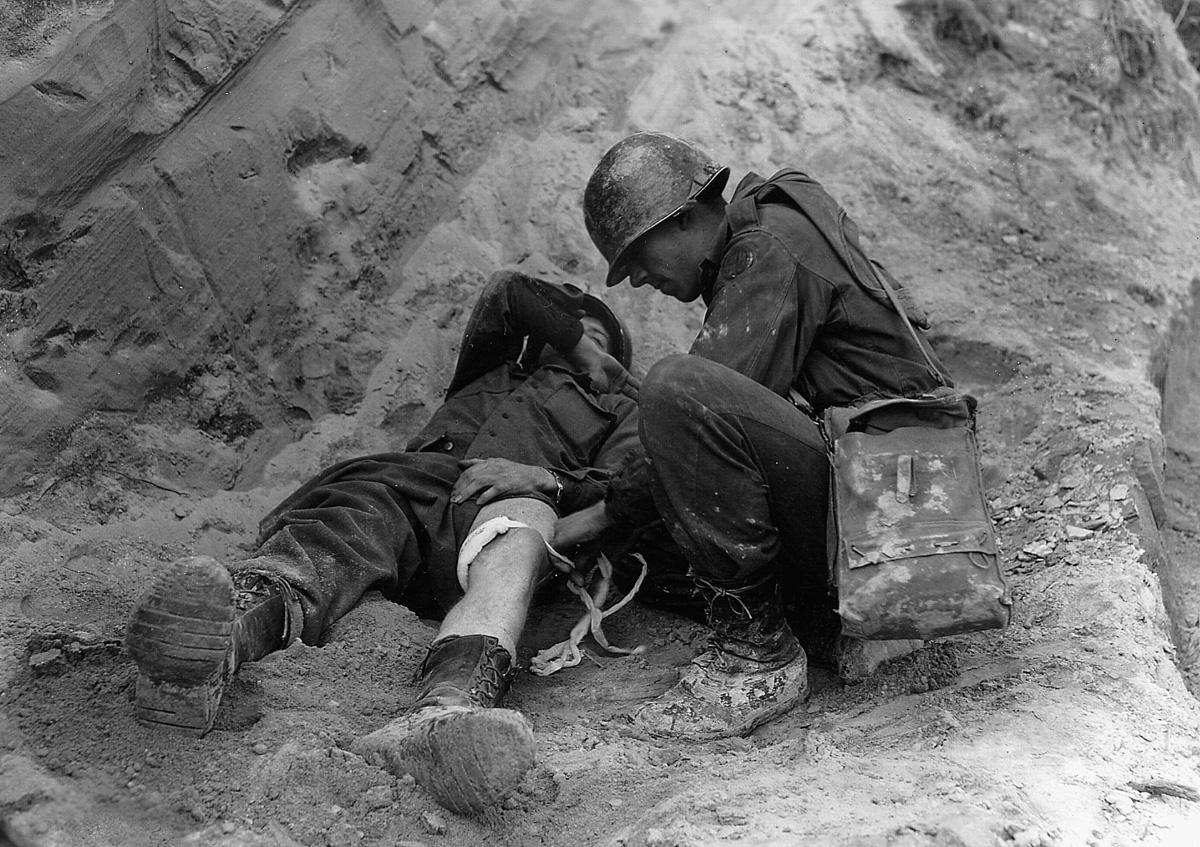
Back to the Front Line
“I thought, ‘I’ll believe that when I see it.’ Well, I didn’t see it. Every Friday, a panel of doctors examined the men who they thought were ready to go back to the front. So on Thursday nights, guys would take a wet, knotted towel and beat on their wounds with it, try and get them redder and rawer. They hoped it would keep them away from the line one more week. Instead of using a towel, I would buckle my combat boot real tight over one of the wounds in my ankle area, walk around to make it red and raw in order to influence the doctors. It worked, until I was sent up one Friday and they said, ‘He looks pretty good. We’ll send him back.’ Before I knew it, I was back at the repple depple in Caserta and reassigned to the same outfit.”
McNelis returned to the mud and snow of the front line in late February 1945, this time as a sergeant. A lot of the men he knew were gone, but some were still there. His company was positioned on a ridge overlooking Bologna, and duty consisted of manning observation foxholes, sending out nightly patrols, and encountering German patrols as well.
“We had a foxhole, which unfortunately was out in front of some barbed wire,” McNelis says. “This one day was very foggy, we couldn’t see very far, and the Germans came up and lay in wait at this foxhole which was to be manned by our troops. I guess they knew how much we stuck to schedule because the Germans let two of our guys through the barbed wire, fired on and killed two others, and took the first two captive. The next day I manned that foxhole, and the Germans had left a couple of their potato mashers in there. Well, things got boring, so I stuck them out in the snow in front of me and used them for target practice, to see if I could hit them, which I did.”
By early April, the Allied armies were rested, reorganized, and re-equipped. Artillery ammunition was stockpiled, as were supplies of gasoline and weapons, and the ground offensive toward the Po Valley was launched. With the help of Allied air forces, enemy lines were quickly penetrated. German troops were mostly trapped on the southern side of the Po River because the bridges crossing it were destroyed from the air. With little or no bridging equipment, thousands of Germans surrendered. Major enemy resistance ended by April 25.
General Heinrich von Vietinghoff, who had replaced Kesselring after he was called back to Germany to try his hand at delaying the Allied offensive in Western Europe, agreed to the unconditional surrender of his army group effective at noon on May 2. A letter from McNelis to his parents, dated April 28, indicates that American GIs knew the writing was on the wall for Germany.
“Dear Mom & Dad,
I hope you have not been worrying about not hearing from me. As I said before, I will write whenever possible. No doubt you have been reading in the papers of what we were doing. These past few weeks of fighting have probably been the easiest we have ever had, though we walked just about day and night and we’re plenty tired. Things look very good on all fronts. We feel Jerry is just about finished. The Air Corps and the Partisans have made the job much easier for us. Many of the people are very happy to see us while others are indifferent. Many rumors are floating around now of a quick finish. We’re hoping that one will come true soon.
Your son,
Paul
“When we finally broke through into the Po Valley from the Apennines, it was a rout,” McNelis says. “The Germans had no way to defend once we broke their line in the mountains. They could have defended their next natural defensive position, which was the Po River, but they were so disorganized trying to get the hell back to Germany that they were in a rout. We were more or less chasing them. Occasionally, they set up holding actions, trying to delay us for maybe half a day until we took them out. Eventually we got up toward the vicinity of Verona and found the bridges across the river were blown. But there was one bridge that our air forces didn’t do a very good job on. The rails across it were still kind of hanging, and we could walk along it. That’s how we crossed that river.
“Then we started toward the Brenner Pass, which connects Italy with Austria, and we went up there maybe 15 or 20 miles, not hitting any opposition. Finally, our outfit was taken off the line, and we went back to Verona where division headquarters was located. They always used a line outfit for security, so our company was assigned to secure division. That’s where we were when the war ended.”
The GI’s celebration of V-E day lacked great luster because of the looming possibility of being sent to the Pacific to fight the Japanese.
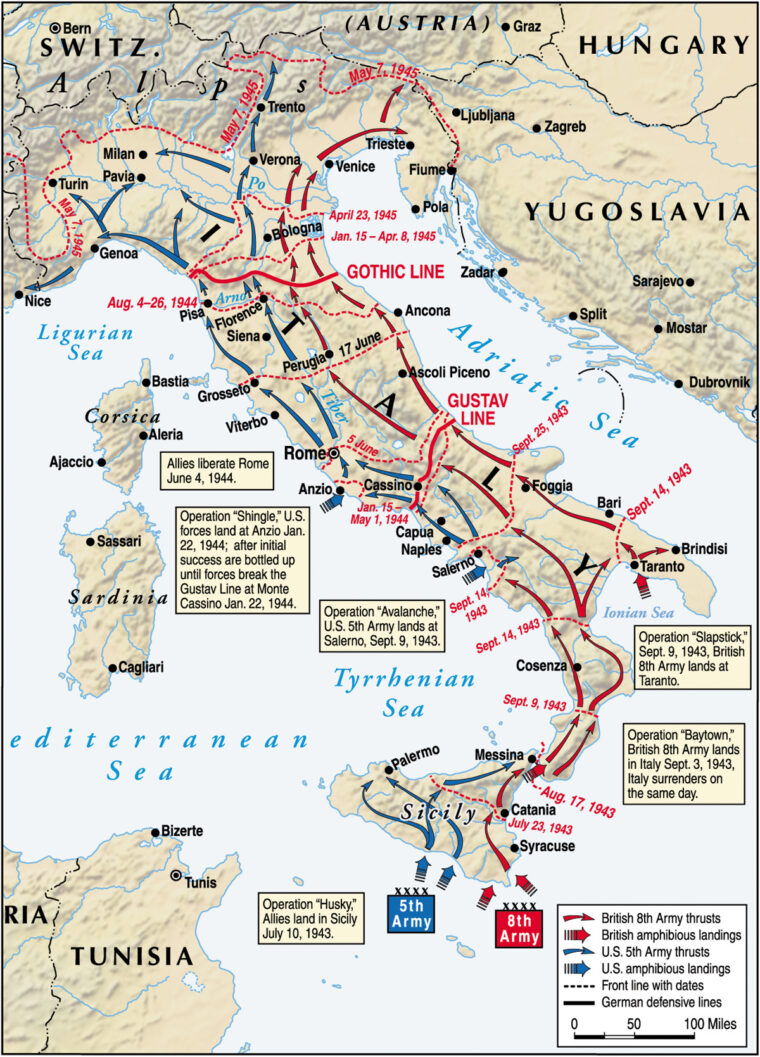
“We thought that we would go to Japan immediately because we were combat troops. They came to me at that point and said, ‘We want you to go to OCS.’ I said, ‘Yeah, then the next move is to Japan.’ I said, ‘Stick it. I don’t want it.’”
Instead of shipping out to the Pacific, the 85th was ordered to the Italian border with Yugoslavia where Communist forces had their eyes on expansion, trying to seize portions of northeastern Italy and southern Austria.
“We had some fire fights there because the Communists wanted to take over northern Italy, which has all the wealth of the country as far as minerals and manufacturing ability,” McNelis says. “Our job was to keep them out. So for us, the war was still on from that aspect.”
Overseas duty ended for McNelis on October 22, 1945, when he left Naples aboard an aging Italian liner called the Monticello. “We had so many troops on board that there was only about 10 inches of space between the racks where we slept,” he says. “And we were kept about three or four decks below. Some mornings after getting up, if we skipped breakfast, we might find a place to sit on these narrow gangways around the ship before they got crowded. At night, we sat around the latrine up along the girders and shot the bull.”
The veteran soldier arrived at Newport News, Va., after 14 days at sea and was discharged from Fort Indiantown Gap on November 8, one day after his birthday. Looking back on his wartime experiences, McNelis offers these thoughts on surviving and the effects of battle on the common soldier.
“Infantry is the toughest duty there is,” he says. “I don’t know why I wasn’t killed. It was probably fate, or maybe luck. Sure, I prayed. I prayed all the time. There are not too many atheists in a foxhole. There really aren’t. But I don’t credit religion, because the Germans prayed just like I did. Why did I make it but they didn’t? Or why me and not my buddy? I think it was where you were at the time, more accidental than anything else. You get lucky.
“War, naturally, is a tragic experience,” he continues. “There were people I knew, in a lot of cases good friends, young people who got killed. But you had to keep going. Now, in later years, I think more about it, not only of our own guys but also the Germans. This one cemetery near Della Formiche has 36,000 German graves. The German soldiers were like us. They had some damn good ones and some damn poor ones. As far as an individual is concerned, war is something that some people have the ability to take more than others. And eventually there is a breaking point, because we had some very good soldiers who cracked up. We couldn’t count on them anymore. But we also had some soldiers who were never any good to begin with. We would go into an attack, turn around, and there were three or four of them taking off. You wouldn’t see them again for a couple of months. They’d go back to the rear and be set up as MPs or something, and spend the rest of the war directing traffic. It was a matter of how much a guy could take and how much he could stand, and we’re all different in that respect.”
Richard Beranty is a veteran of the U.S. Navy, a former newspaper editor, and a high school teacher residing in Kittanning, Pennsylvania.
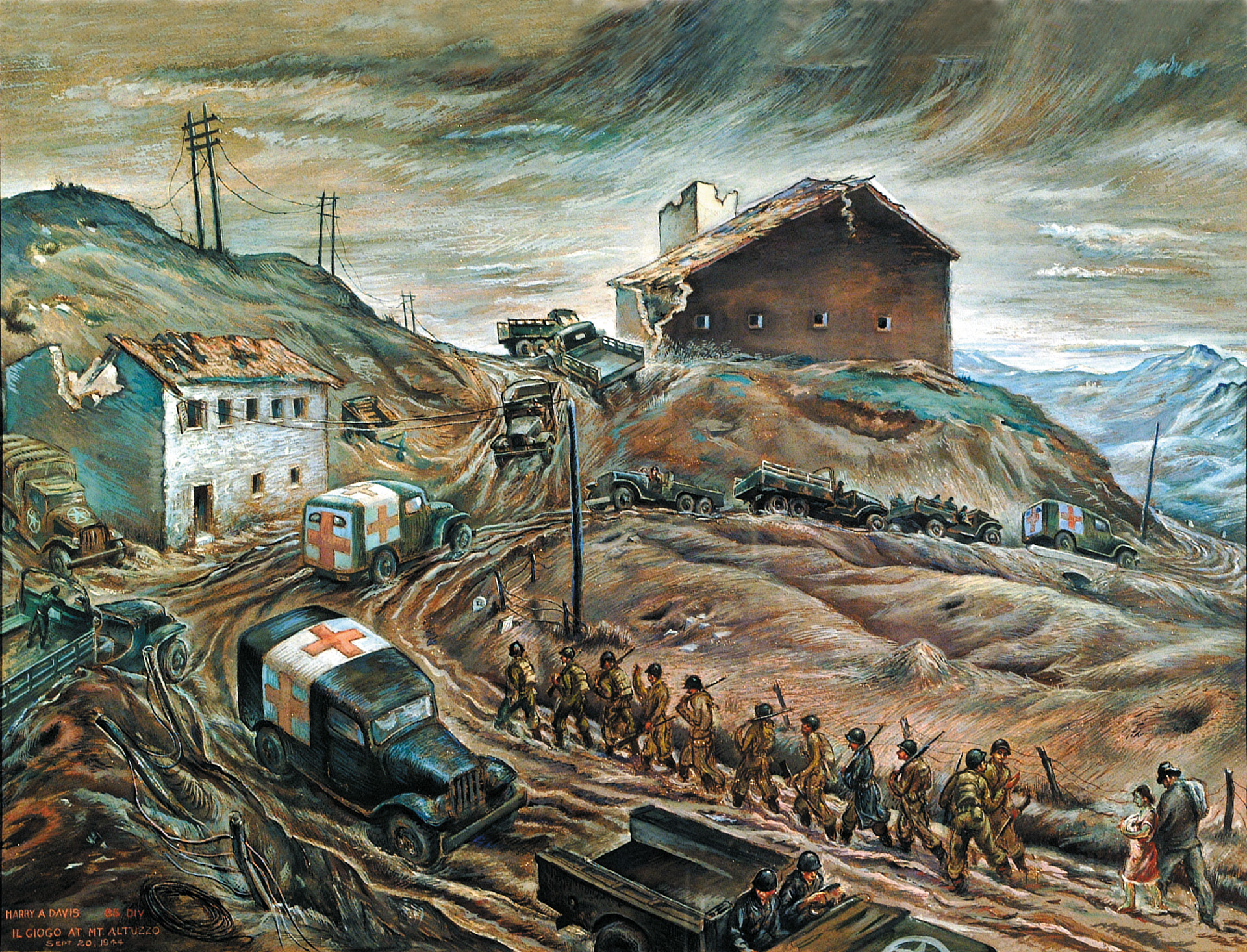
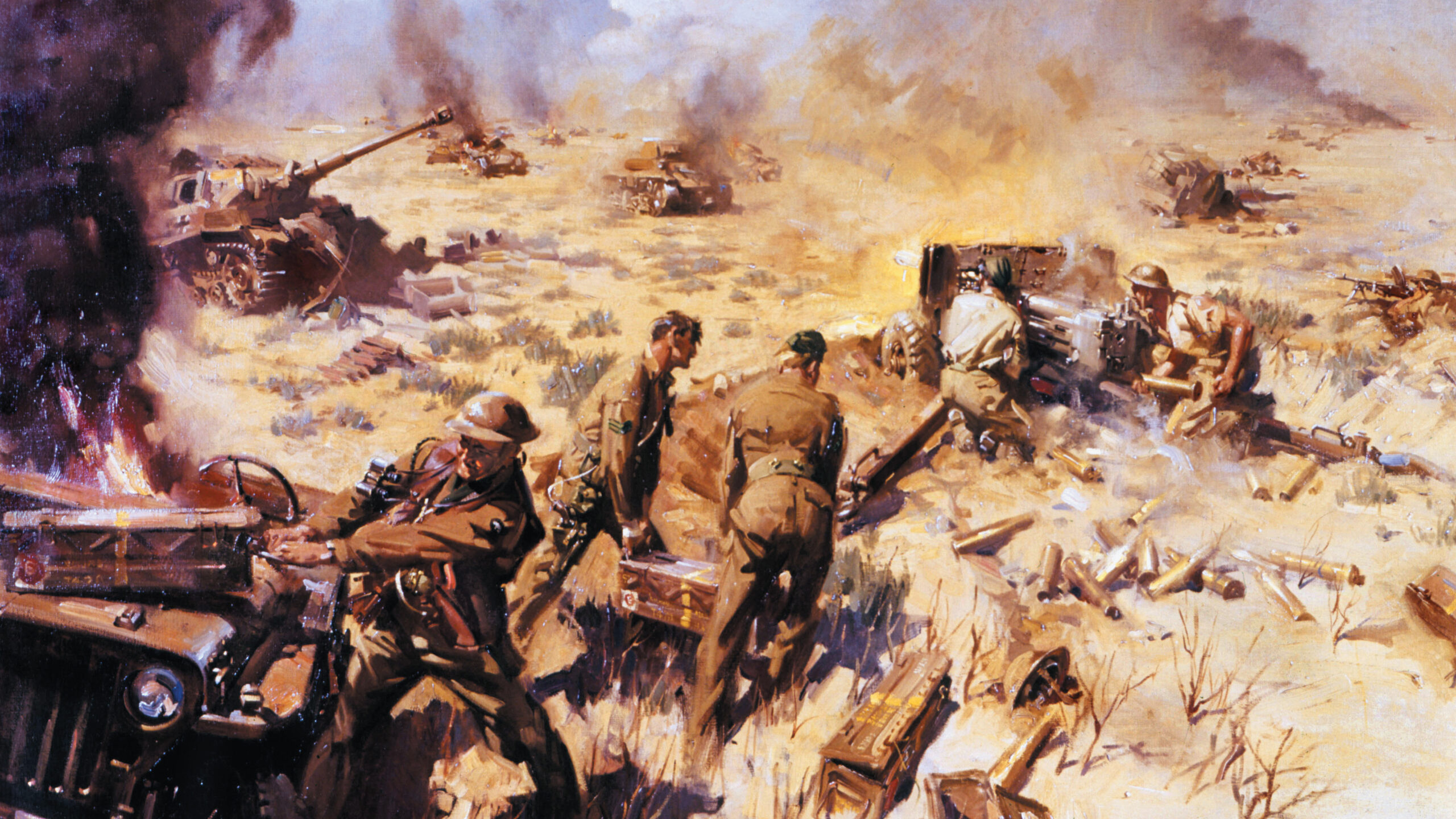
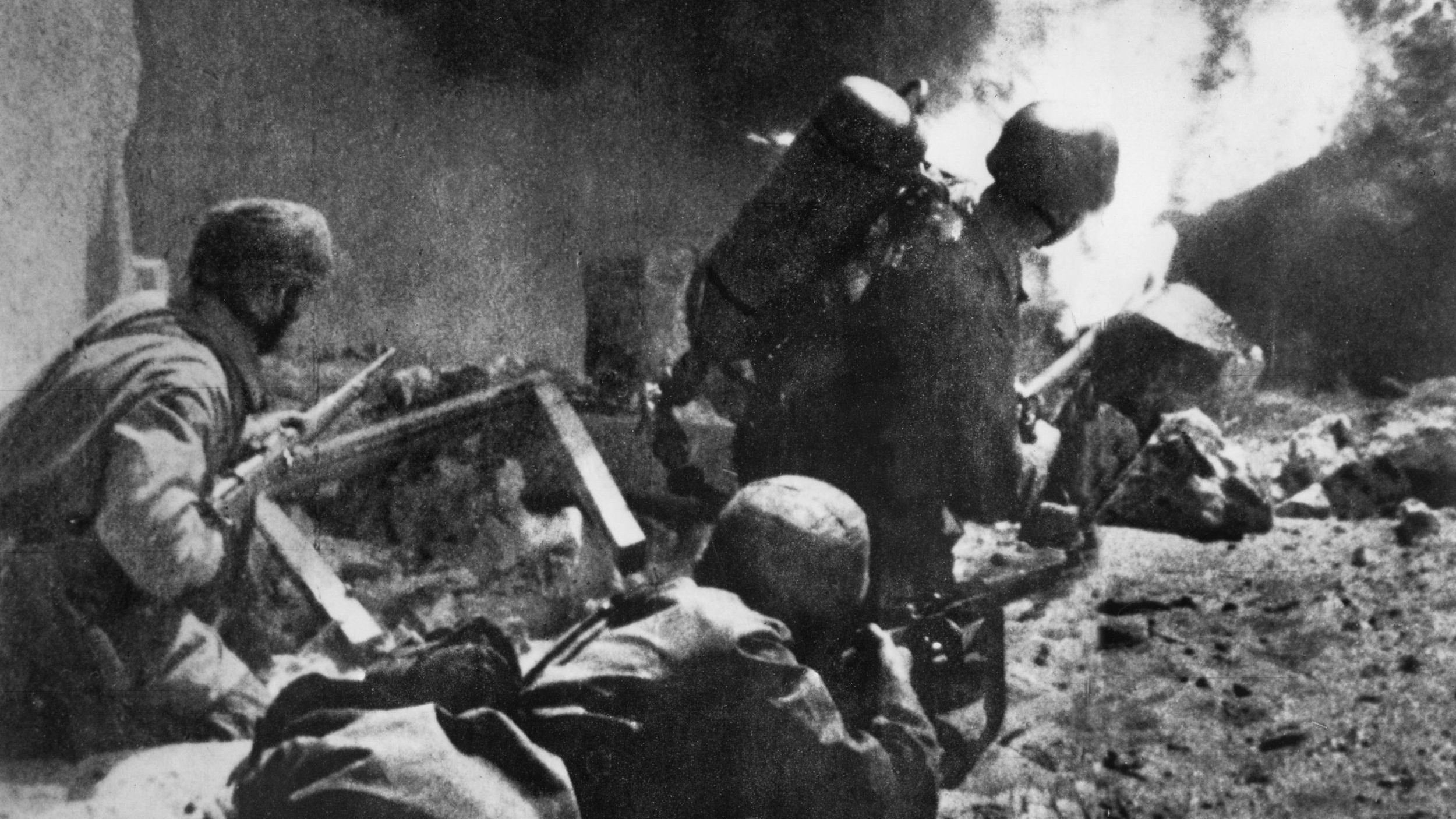
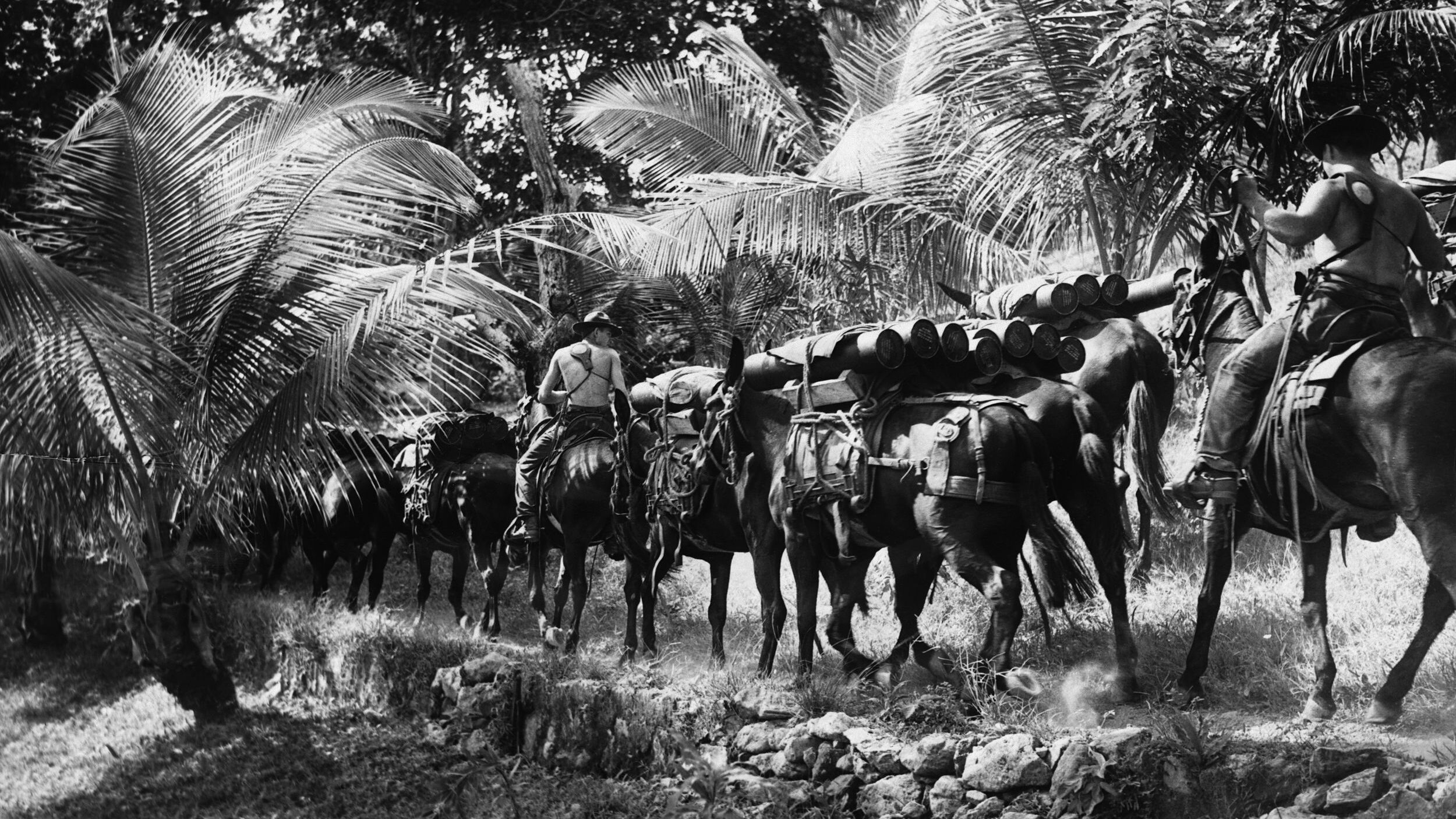
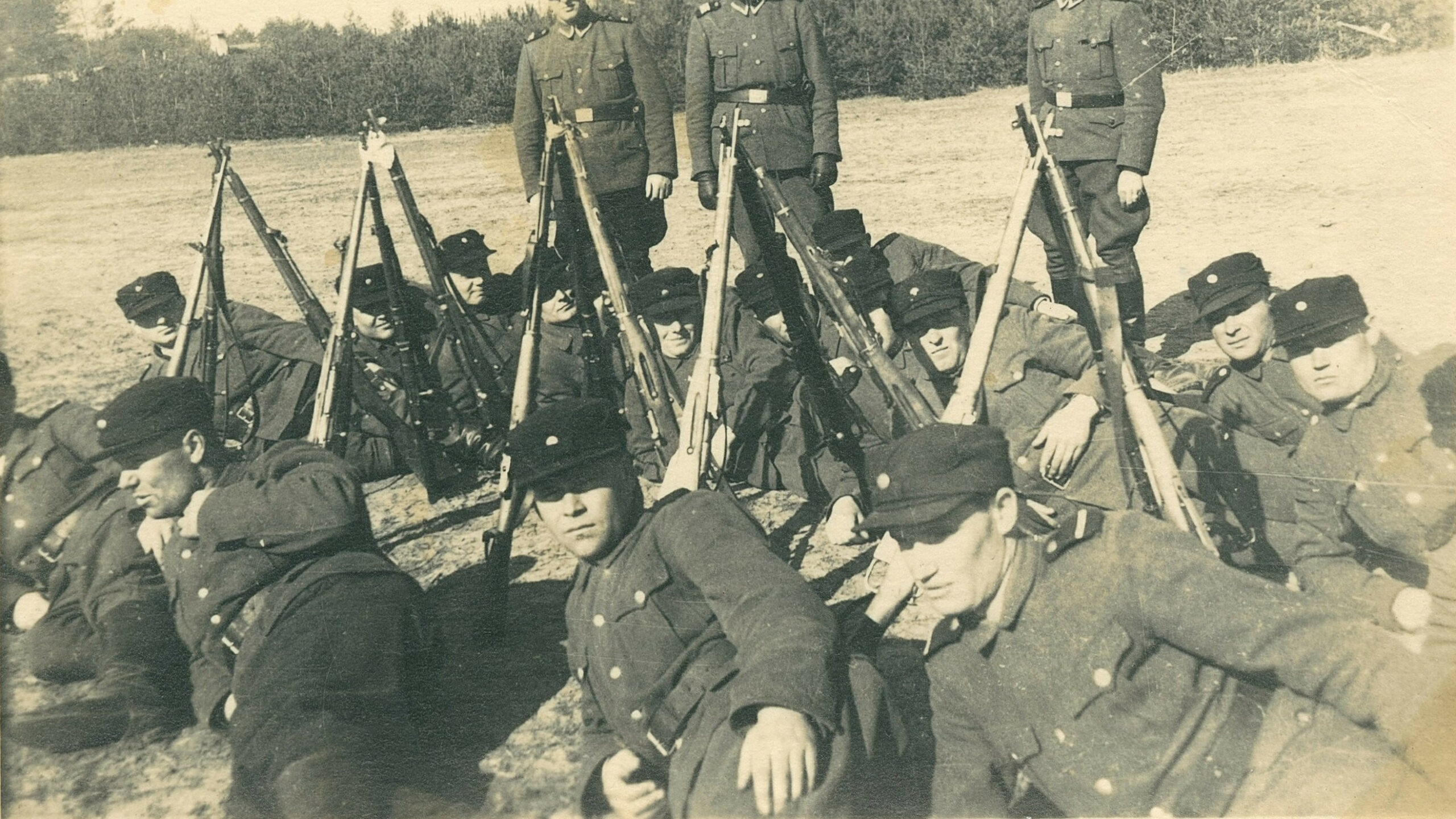
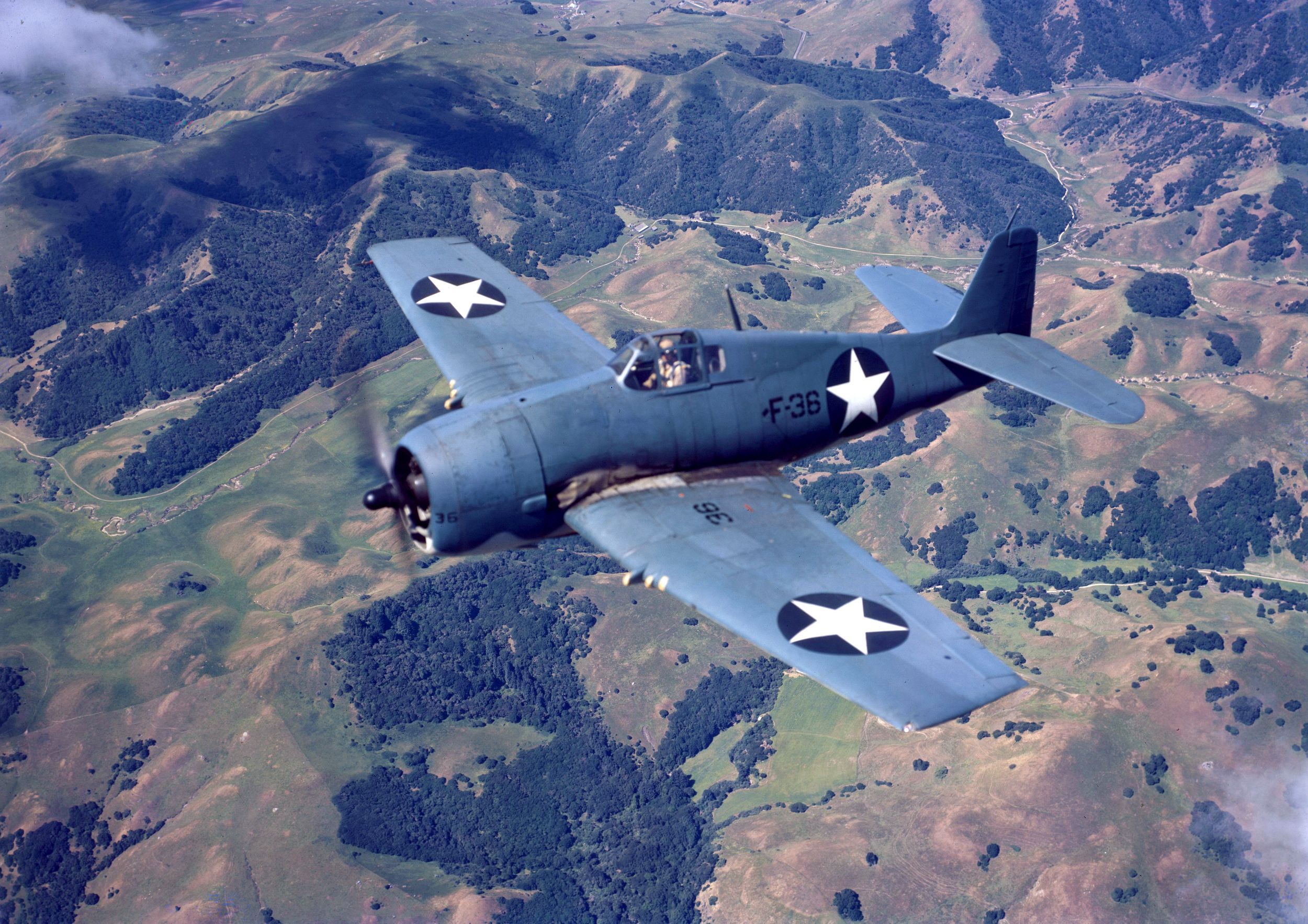
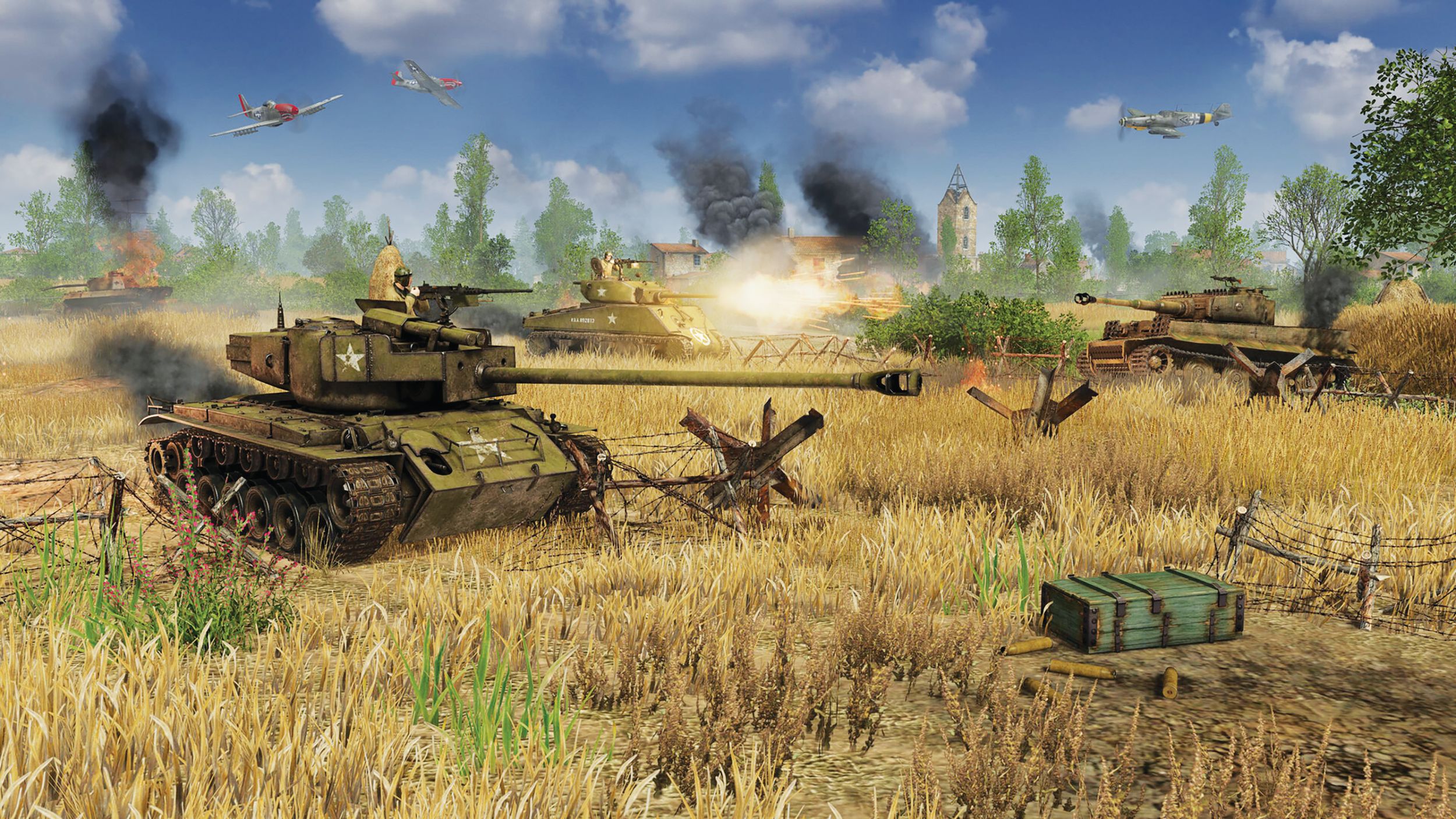
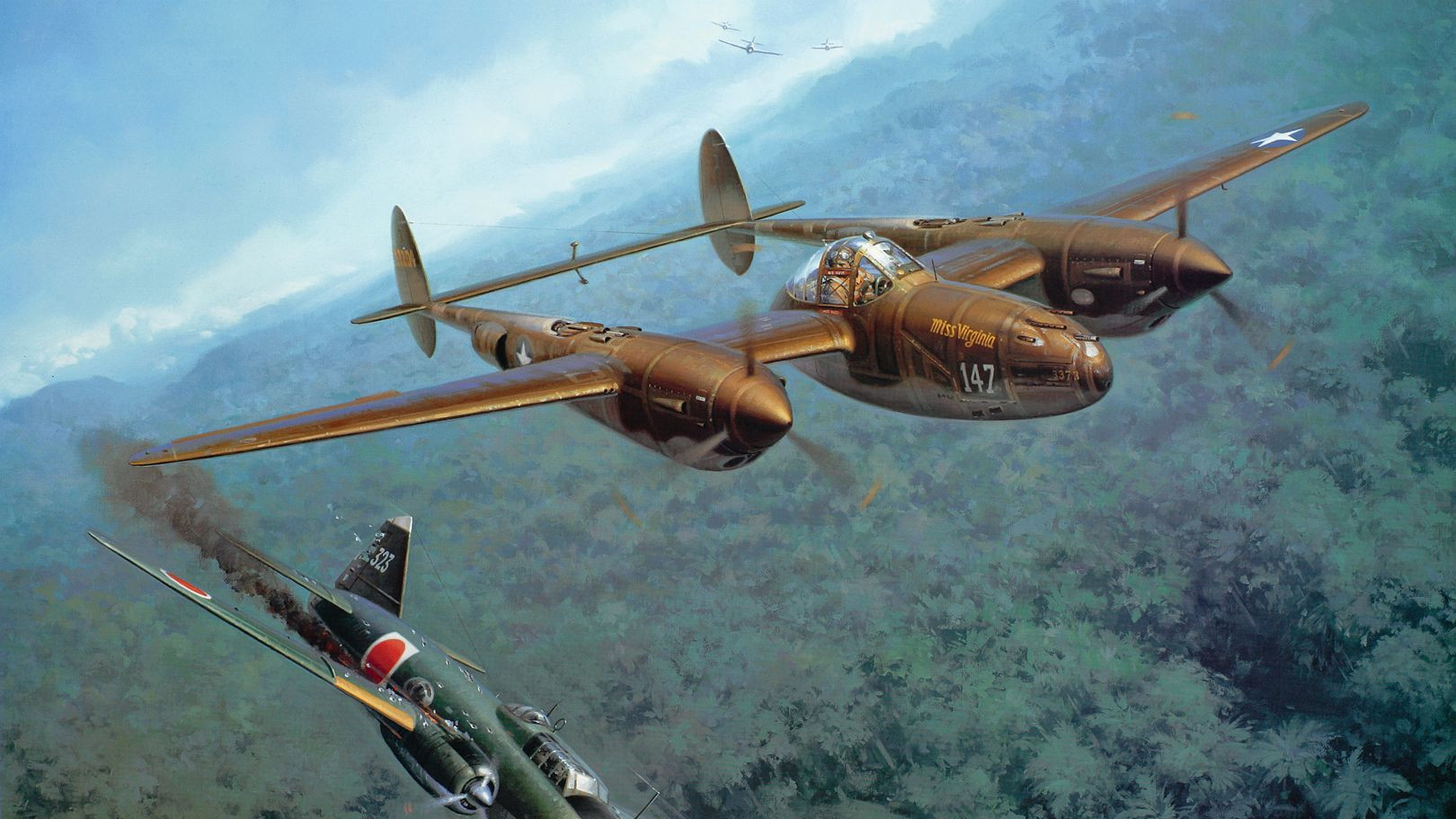
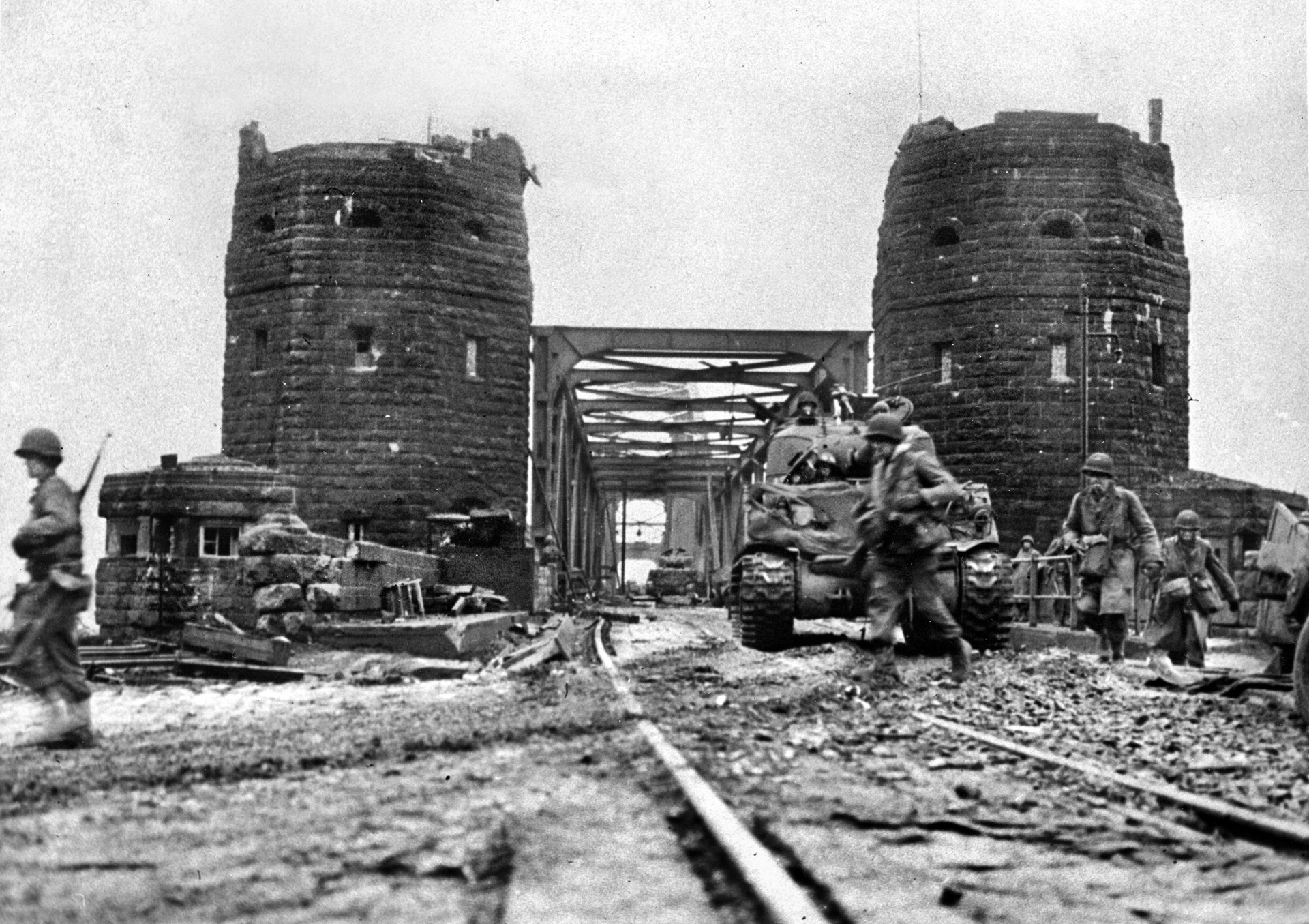
Join The Conversation
Comments
View All Comments